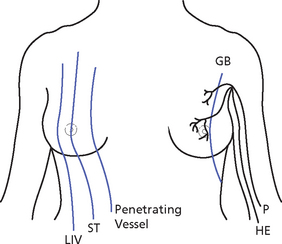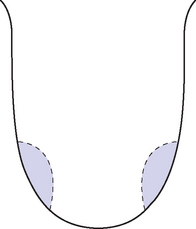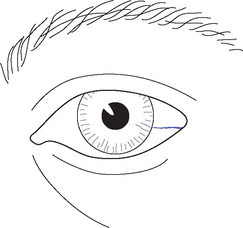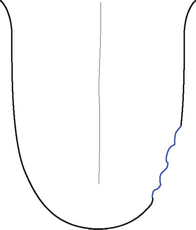 OBSERVATION OF WOMEN’S BREASTS
OBSERVATION OF WOMEN’S BREASTS
CHANNELS INFLUENCING THE BREASTS
The channels coursing through the breasts are illustrated in Figure 12.1.

Fig. 12.1 Channels coursing through the breast
As we can see, the main channels influencing the breast are the Liver, Stomach and Penetrating Vessel: in addition, the Muscle channels of the Heart, Pericardium and Gall-Bladder also flow through the breast. In the internal anatomy of the breast, the various structures are influenced by the following channels or tissues:
Box 12.1 summarizes the channels influencing the breasts.
BREAST SIZE
BREAST LUMPS
Interrogation, Chapter 46; Palpation, Chapter 51; Symptoms and Signs, Chapter 88
Carcinoma of the breast This usually presents with a single, painless, unilateral, immoveable, hard lump with indistinct margins. Its incidence is highest after the age of 50. It is nearly always due to a combination of Phlegm and Blood stasis occurring against a background of disharmony of the Penetrating and Directing Vessels. In carcinoma of the breast, there may be Toxic Heat in addition to Phlegm and Blood stasis. Phlegm is usually manifested by a Swollen tongue with sticky coating, and Blood stasis by a Purple colour on the breast areas of the tongue (Fig. 12.2) and Toxic Heat by a Red tongue with a thick, dry, dark-yellow coating and red points.
Case history 12.1 illustrates a pattern underlying a breast lump.
Box 12.2 summarizes the factors underlying breast lumps.
NIPPLE ABNORMALITIES
Bloody discharge from the nipple
Symptoms and Signs, Chapter 88
Box 12.3 summarizes patterns underlying nipple discharges.





